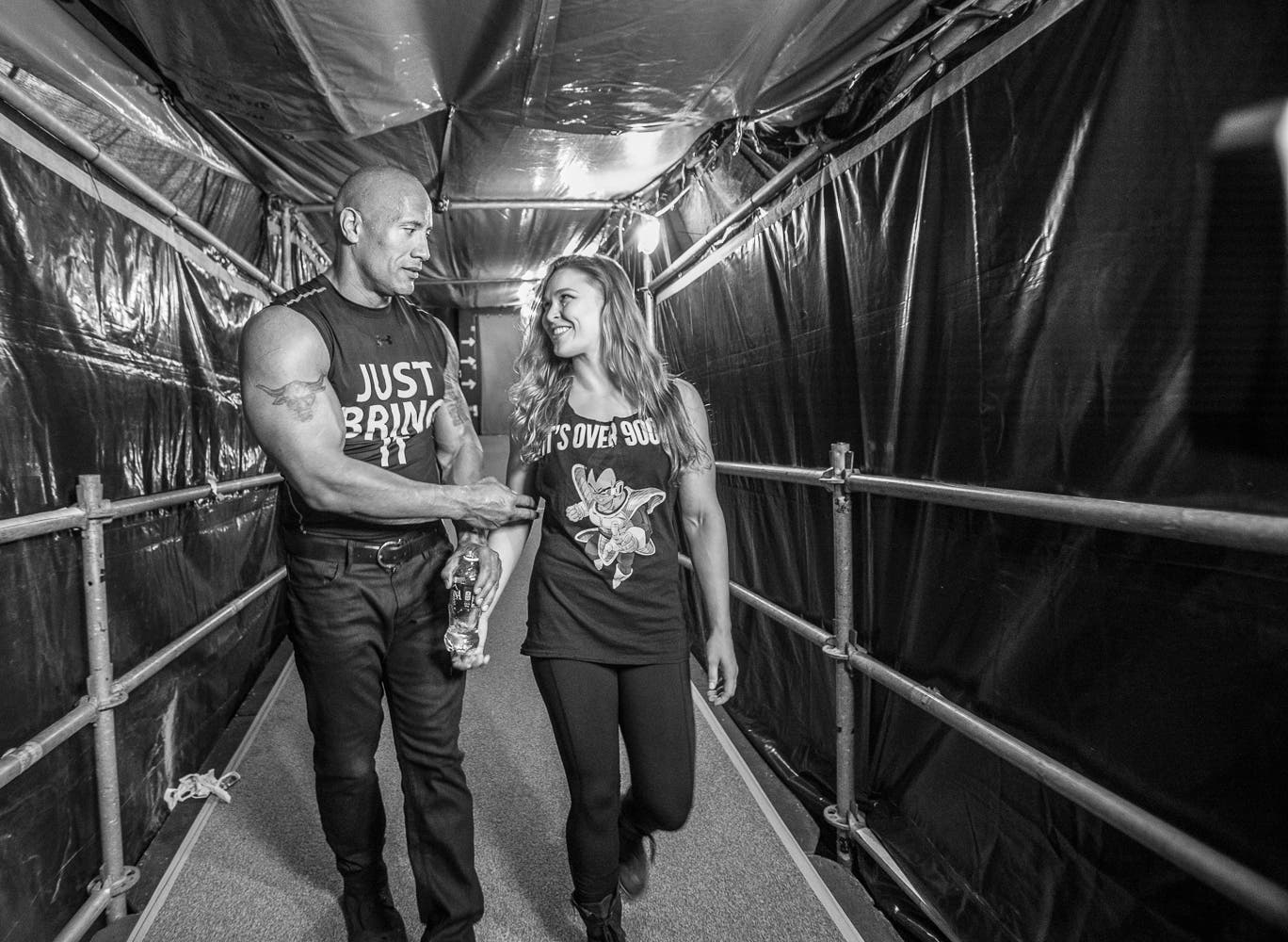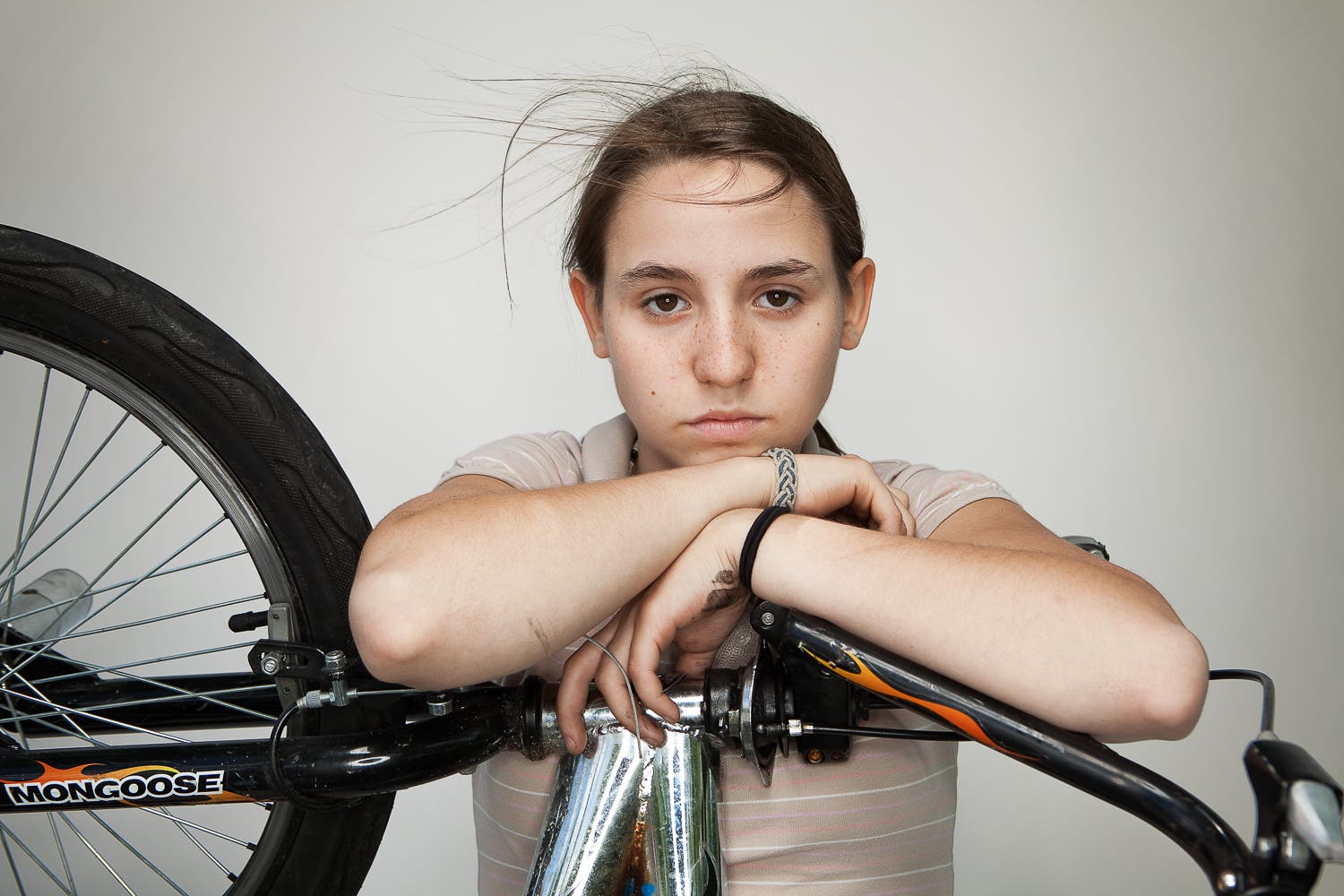Rich Freeda has been a self-employed photographer since 1992 and he’s the sole proprietor of Richard Freeda Photography of Stamford, Connecticut. He majored in journalism at the State University at Buffalo, NY and spent his formative years shooting as a news photographer for local newspapers, the Associated Press (AP) and UPI. As a result, his stunningly beautiful and insightful images embody the photojournalistic traditions of directness, truth, and uncompromising authenticity.
Though he’s adept at Photoshop, he keeps post-production image manipulation to a minimum, ensuring a purity of expression that sets his work apart from most other editorial, advertising, design, and commercial photographers. He doesn’t really have a style as such. “I treat each particular subject as an individual, and strive to capture them as honestly as I possibly can,” says Freeda. “I strive to make each image as perfect as possible in camera, a discipline I learned back when I was shooting film.”

It is a tribute to Rich Freeda’s talent and dedication that his client list includes such household names as Dunkin’ Brands, Food Network, GE, NBC Universal, SKYY Vodka, Xerox, Gatorade, WWE, RBS, and Business Week. “Ultimately I chose to express my journalistic roots in images rather than words,” Freeda says, “and the only thing I’ve ever dome for a living is photography.”
What made Rich Freeda decide to become a pro? Here’s the amusing story, verbatim:
“When I was in college in Buffalo, NY, I had a friend who was a photographer for the UPI and he was covering news and sports assignments for the wire service,” he tells the ALC. “He knew I was a hockey fan and invited me to a hockey game, just to watch and see what he did. He handed me a camera and told me to pretend to shoot photos so I could sit close to the game, along the glass. I asked him to put a roll of film in the camera so I could try to take photos of the Buffalo Sabres/New York Rangers hockey game. I took 36 mostly terrible photos, but I was hooked. I never looked back. I changed my college major from computer science to journalism and started buying camera equipment and shooting as much as I could.”



Freeda spent six years in Buffalo and photographed scores of Buffalo Sabres hockey games and Buffalo Bills football games, which turned out to be a pivotal experience. When he moved to Stamford, Connecticut in the early 1990s, he hooked up with WWE, (formerly WWF/World Wrestling Entertainment) a sports entertainment company that produces shows all around the world. Now, they’ve been a client of his for almost 25 years and he’s traveled the world at their behest photographing shows in locations including China, South Korea, Australia, New Zealand, Europe, and Saudi Arabia.
The company has grown over the years and Freeda’s work includes covering sports action, photographing the wrestling matches ringside, doing elaborate, high level, art directed photo shoots, to days-long documentary assignments. “It’s really is one of the most incredibly photo rich and photo hungry environments I have ever seen,” says Freeda, “and it’s been an honor to be a small part of the amazing imagery they produce.”


The summer after photographing his first hockey game, Freeda took the only formal photo education course he’s ever attended: an introductory black-and-white photo class at Nassau Community College on Long Island, where he grew up. There, he learned basic darkroom techniques and developed and printed his own film.
Once he returned the metro-Buffalo, NY area, he immersed myself in the photo community and shared an apartment with a group of photographers. “At that time, my primary influence were news photographers,” he recalls, “but my friend Mike Groll, who now works and lives in Albany, NY really deserves the credit for taking me to that first hockey game and making me believe I could do photography for a living. When I told him, at age 19, that I thought it was too late or I could never do this, he was always encouraging. He even took me to his favorite pawnshop, Breezy’s Pawn Shop in downtown Buffalo, to buy my first real camera.”


What equipment does Rich Freeda use to capture his awesome images? “I’ve primarily been a Canon shooter for years, I’ve also shooting with the Sony Alpha a9, which is an amazing camera. I still occasionally take out my Hasselblad 501c medium format film camera. The Sony mirrorless system is very different and powerful. It’s a big adjustment to shoot with something so different, but some of its features are like super powers that I wish I had years ago. To be able to shoot with a completely silent shutter in certain situations is a big advancement, especially when doing documentary work.”
“For lighting, I use Profoto,” he adds. “I bought a Profoto B1X system recently and it delivers a lot of power in a relatively small package. Anything that makes my life easier, that advances the way I work, is a tool I’ll consider, but I’m pretty loyal to the equipment I use. I shot with the Canon EOS system for 20 years before I gave the Sony mirrorless a try, starting with the Alpha a7s. I recently began shooting with a Sony 24-105mm f/4 which is a lot of lens in a small package. Paired with my Sony A9, it’s incredibly sharp and responsive when I’m trying to work quickly. I also love the Sony Zeiss Distagon 35mm f/1.4 and the Sony Zeiss Planar 50mm/1.4. These are beautiful lenses that can really make or break an image, especially when shot wide open at f/1.4 or at f/2.0. The glass is everything you’d expect from the something with the Zeiss name on it. “


“I think work tools are very personal,” Freeda continues. “When I first started shooting in college, I used Nikon 35mm film cameras and mostly prime lenses. In the early ’90s I moved over to Canon EOS because they were pioneering the autofocus systems that are largely used today. I have used Leica, Nikon, Canon, Hasselblad, and even some 4×5 cameras for some specific projects. I really try to look at the project and see what tool is the best for the tasks at hand. With the expectation of today’s commercial clients for timely turnaround, I don’t shoot film any more for commercial work. I still do for personal work, but it’s just not practical when working with an agency, art director, or photo editor.”
“I like to think of all my work as honest, above all,” Freeda asserts. “That’s why I love the work of photographers like Avedon and Penn whose work still resonates with me. I don’t think I have a specific style, but I would describe my work as direct, authentic and truthful — qualities that were influenced by my roots in photojournalism and my deep admiration for its great masters. In my personal work, I like to take a deeper dive into projects and people that interest me personally.”


Here’s a good example of the latter: “A while back, I wanted to do a project that was apolitical, but about people, politics and democracy,” says Freeda. “I decided to produce a series of images of New American Voters, a group made up of high school seniors who had never voted before and people who had sought and achieved their US citizenship. It was a fun project that yielded some images I can be proud of. Most of my personal project work is portrait-related. It helps me keep the fun and personal side of photography present, and balances out my commercial shooting which is a little more structured, typically working off specified layouts, and defined by very specific art direction.”
How does Rich Freeda see his work evolving over the next few years? “I don’t know whether I see my work changing all that much, but maybe going forward, I’ll be looking deeper into the way I see the world,” he says. “I think as you grow, you see the world a little differently and that is inevitably reflected in the work you produce. In any case, my greatest reward is being able to hold a camera in my hands and make a living in the course of pursuing my passion.”
The fact that he considers this as his greatest honor tells you all you need to know about who Rich Freeda is and why his work captures the truth and emotional intensity of whatever is in front of his camera.
To find out more about Rich Freeda and see more of his outstanding work, follow him on Instagram @richfreedaphoto and Twitter @richfreedaphoto, or on his website www.richardfreeda.com. Freeda is an avid skier, hiker, triathlete, and the devoted father of twin girls. He and his wife live in Stamford, Connecticut.





